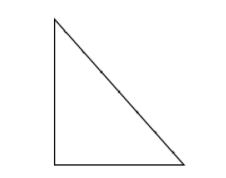Question
Question: How do you use the law of cosines to find BC given a triangle ABC with angle \(A = 93,\,AC = 17\) an...
How do you use the law of cosines to find BC given a triangle ABC with angle A=93,AC=17 and AB=28?
Solution
First we will draw a rough diagram. Then mention all the given terms and their respective values. Then use one of the forms of Laws of Cosines. Then substitute the values of the terms and simplify the terms to evaluate the value of the side BC.
Complete step by step solution:
We will first draw a rough diagram.

∠A is unchanged which is 93.
Side AC becomes side b which has the value 17.
Side AB becomes side c which has the value 28.
Side BC becomes side a whose value is unknown.
The one of the three forms of the Law of Cosines that we need is:
a2=b2+c2−2(b)(c)cos(A)
Now, we will substitute all the given values.
a2=172+282−2(17)(28)cos(930)
Now, we solve for the value of a.
a2=172+282−2(17)(28)cos(930)
Hence, the value of the side BC is 33.5.
Additional information: Inverse trigonometric functions are simply defined as the inverse functions of the basic trigonometric functions which are sine, cosine, tangent, cotangent, secant and cosecant functions. They are also termed as arcus functions, anti-trigonometric functions or cyclometric functions.
Note: While using the different forms of Laws of Cosines choose according to the given and required terms. Substitute the terms in the equation cautiously. While modifying any identity make sure that when you back trace the identity, you get the same original identity.
